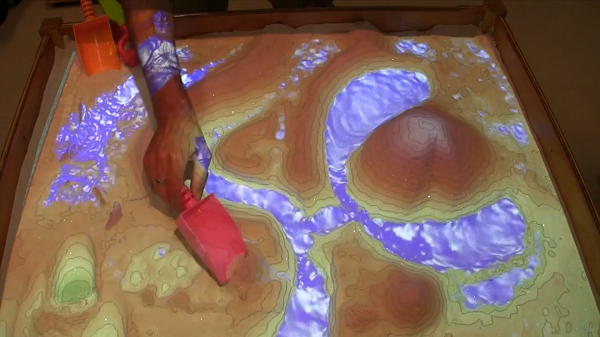 Just a few weeks ago I wrote that augmented reality (AR) had yet to prove itself. It’s a neat idea, and we’ve seen so many concepts that look great in theory but have yet to be realized, or the all too familiar app which gives you a HUD when you hold your phone up that shows you where different points of interest are around you — these always turn out to be ultimately useless and nothing more than gimmicks.
Just a few weeks ago I wrote that augmented reality (AR) had yet to prove itself. It’s a neat idea, and we’ve seen so many concepts that look great in theory but have yet to be realized, or the all too familiar app which gives you a HUD when you hold your phone up that shows you where different points of interest are around you — these always turn out to be ultimately useless and nothing more than gimmicks.
But, that doesn’t mean that AR isn’t promising. In fact, I just saw perhaps one of the coolest real applications of augmented reality that I’ve seen to date. Have a look at this incredible AR sandbox that overlays topographical maps onto the sand, and even simulates liquids:
[youtube http://www.youtube.com/watch?v=j9JXtTj0mzE]
This incredibly fun looking experience is powered by a Kinect, a projector, and a computer (with an Nvidia Geforce 580 GPU). The range-finding sensor in the Kinect is responsible for establishing the depth of the sand. That information is fed to the computer which translates it into color-coded topography which is then sent to the projector. Water can be added with a gesture and is simulated in real time using the depth data to create a 3D environment for the water to flow through.
This awesome demonstration was put together by folks from the UC Davis W.M. Keck Center for Active Visualization in the Earth Sciences. They say that augmented reality sandboxes like these will be set up in museums as hands-on exhibits. Detailed technical information about the project can be found here.
This is exactly what AR needs to catch on — ground-up uses rather than novelties or tack-ons. There is immense potential in this sort of real/digital information mashup. Everything from practical, entertainment, and educational uses can be extrapolated from this video. The sad part is that — as with most AR/VR usage that we see today — this was hacked together using off-the-shelf equipment. Any big company could step in and launch a product today that makes this sort of augmented reality experience accessible to everyone, and truly takes advantage of the technology, but so far none have stepped up to the plate.
Do they not see the potential in this sort of transformative and visceral experience? Finding ways to interact with digital information in a natural way, rather than through unintuitive interfaces like keyboards and mice, is going to be a rapidly rising priority over the next 10 years. The tools are here folks, we just need someone to take them seriously and offer them in a consumer-friendly package if we want them to take off.
If you’ve been following carefully, you know that I write this blog mostly with a focus on VR and AR applications for gaming — that’s where we’ll see them in the immediate future — and so I can’t end this article without mentioning how incredibly awesome it would be to take the above setup and create an augmented reality version of the game From Dust. Just spend a few minutes watching this gameplay video if you’ve never played it, and with just a little bit of imagination, I think you’ll see how amazing it could be!
And if the first video of the augmented reality sandbox didn’t intrique, here’s even more ‘gameplay’:
[youtube http://www.youtube.com/watch?v=d_ZHsgKjNNk]





